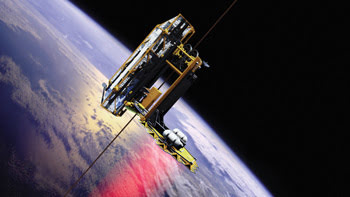The Next 50 Years
Jochen Deile, Trumpf Inc.
If one reviews what
happened in the first 50 years of the laser’s history, it becomes quite a
challenge to predict what will happen in the next 50. Lasers went from being called
“a solution in search of a problem” to becoming an integral part of
many aspects of our daily lives. Today, lasers are used for diverse applications
in fields such as materials processing, telecommunication, medicine, defense, science
and astronomy, sensor technology, data storage and entertainment.
Within the first few years of the laser’s invention five
decades ago, many of the types of lasers that we use today had already been demonstrated.
The future starts yesterday
No matter how many new laser types are developed in the future
or how many additional applications are found, a few advancements are inevitable
because certain trends have been in the pipeline for quite a while.
Lasers will continue to become smaller and more compact, more
efficient, and lower in cost in terms of investment and operation. They also will
become even more reliable than they are today and will require less maintenance.
These developments will pave the way for new applications and make it possible for
applications already being discussed to become financially and/or technologically
feasible.
The expansion of the range of all laser characteristics –
such as power, pulse energy, wavelength and pulse length – and the ever-increasing
level of integration of components within a laser and of lasers into other devices,
will open the door for new applications.
Questions and more questions
More specific questions about the future of laser technology are,
of course, difficult to answer definitively. Here are a few to think about:
Will we see completely new laser types, or primarily modifications
and improvements of technology that already exists?
Will barriers to other technologies first have to be overcome
for laser technology to take the next step? One possible challenge that comes to
mind, for example, is battery technology that might be required for mobile laser
applications.
Will safety issues have to be resolved before lasers can be deployed
in unusual or less-controlled environments?
Will completely new laser applications evolve? Or will we simply
see modifications and improvements to existing applications?
New new? New old? Or both?
Many researchers are working to replace the laser technology that
already exists. One example is the use of lasers in picoprojectors, allowing devices
such as smart phones not only to take pictures but also to project them and other
documents onto a screen. Researchers also are developing the next generation of
laser technology for existing applications. In industrial production, lasers are
being used to produce extreme-ultraviolet (13.5 nm) wavelengths that are enabling
the continuation of Moore’s Law – the doubling every two years of the
number of transistors on an integrated circuit. Industry is focused also on decreasing
photolithographic feature size.
 Yet another evolving sphere is optical computing. A significant
amount of research is happening in this field, and the collaboration of scientists
and engineers might one day lead to a completely new level of computing. Light,
in contrast to electric current, does not produce heat, which is a limiting factor
in increasing processing speed. Because light beams, unlike traces for electric
current, can cross without interacting, optical computing could provide alternate
options for the layout of circuit boards.
Yet another evolving sphere is optical computing. A significant
amount of research is happening in this field, and the collaboration of scientists
and engineers might one day lead to a completely new level of computing. Light,
in contrast to electric current, does not produce heat, which is a limiting factor
in increasing processing speed. Because light beams, unlike traces for electric
current, can cross without interacting, optical computing could provide alternate
options for the layout of circuit boards.
The future looks bright – and interesting
In addition to the applications that are almost certain to become
a reality is the long list of possible applications that most people living in the
year 2010 would classify simply as, shall we say, “over the top.”
In this futuristic category, the most predominant ideas are probably
best summarized by the term “laser weaponry.” Although some applications,
such as the neutralization of surface land mines, already exist, more are to come.
Interestingly enough, in the early days, laser beams were labeled by some researchers
as death beams and, starting in the 1960s, were used as such in science fiction
movies.
Another application possibility is power beaming. The concept
behind this is that laser beams transport energy to places that are not easily reached
via conventional methods. Examples include supplying energy to remote military camps
or to a zeppelin (airship) stationed above a specific area for observation tasks.
The space elevator is another project on the horizon. A laser
is used to deliver energy to a climber that travels up into space along a tether
suspended from a satellite. An international space station already exists; if a
space elevator is developed, it will facilitate access to other planets. At that
point, lasers might be used for interplanetary communication. And while we’re
on the topic of space-related applications, we should mention that lasers potentially
could be used to beam power down from space to Earth, using energy generated by
solar cells stationed in space.
 Another activity related to energy generation is one of the largest
laser projects currently in development. At the National Ignition Facility, the
beams of 192 lasers are focused onto a target composed of hydrogen to fuse the hydrogen
atoms’ nuclei and to produce energy. If successful, this could be a major
component of solving the energy problem.
Another activity related to energy generation is one of the largest
laser projects currently in development. At the National Ignition Facility, the
beams of 192 lasers are focused onto a target composed of hydrogen to fuse the hydrogen
atoms’ nuclei and to produce energy. If successful, this could be a major
component of solving the energy problem.
If the trends mentioned above are far-reaching enough, it might
be possible not only to have laser pointers in a Swiss army knife, as we do today,
but also even to replace the stainless steel blade with a laser blade. Just imagine
the possibilities for a moment: You could cut down that tree in your backyard with
a laser.
Now that we’ve speculated about the potential for future
laser applications, let’s take a look at the lasers themselves. Laser diodes
certainly will increase in power, and we’ll see dramatic improvements in their
beam quality. Lasers that are widely discussed today, such as fiber and disk types,
will be replaced by direct diode systems for many applications. And new materials
such as nanopowders might lead to the development of entirely new laser types altogether.
While there are many unknown aspects regarding the future of laser
technology, one thing remains certain: The possibilities are endless.
As in the past, it is unlikely that we’ll see the one single
laser that can perform every application requiring one.
And as a laser guy, I really hope that no technology replaces
the laser in the way that the laser has replaced other technologies. However, if
I could gaze into a crystal ball for a moment and make a prediction, I’d have
to say that it’s a pretty safe bet that lasers will be around long after I’m
gone.
Meet the author
Jochen Deile is the manager of new laser products for Trumpf Inc.
in Farmington, Conn.; e-mail: [email protected].